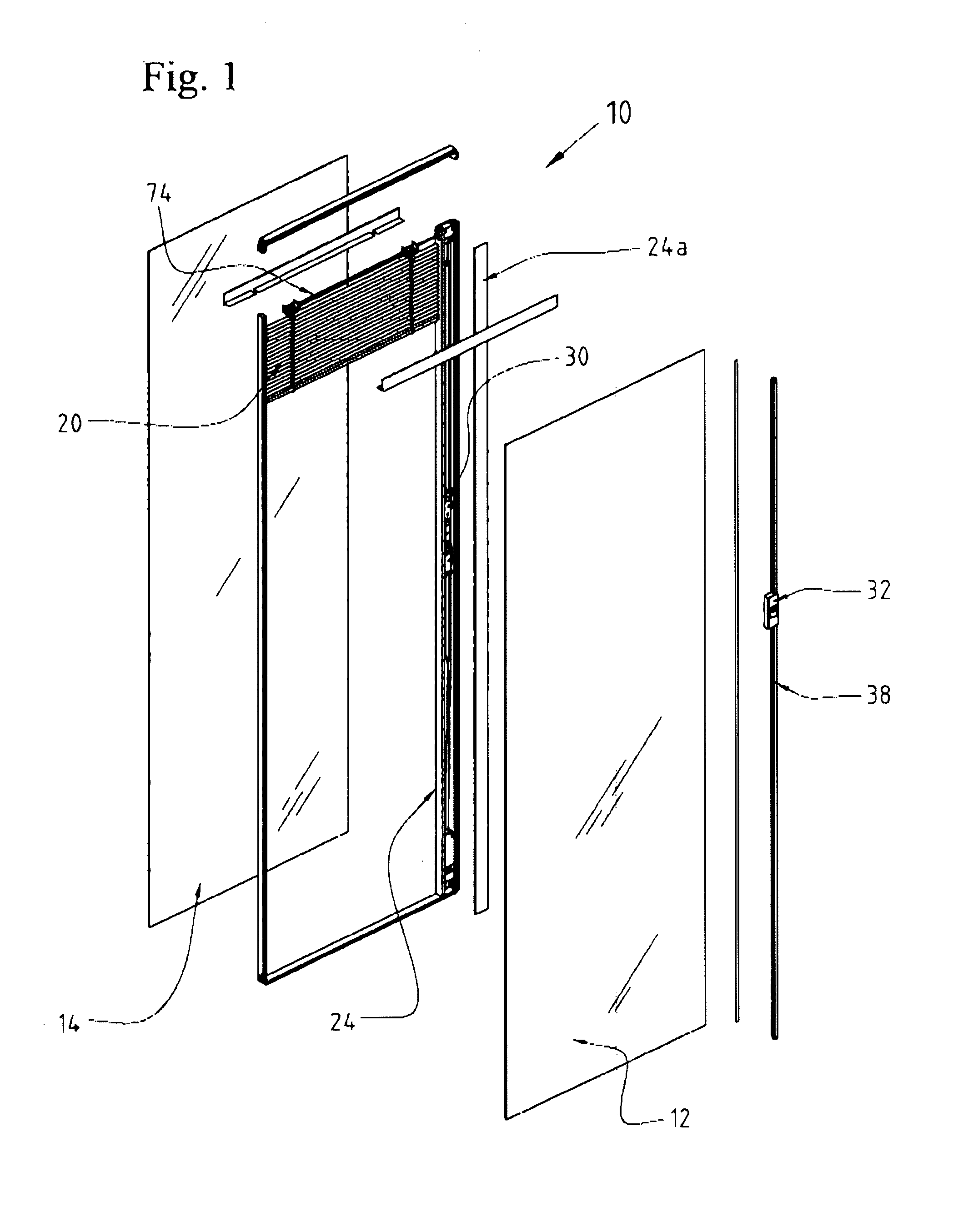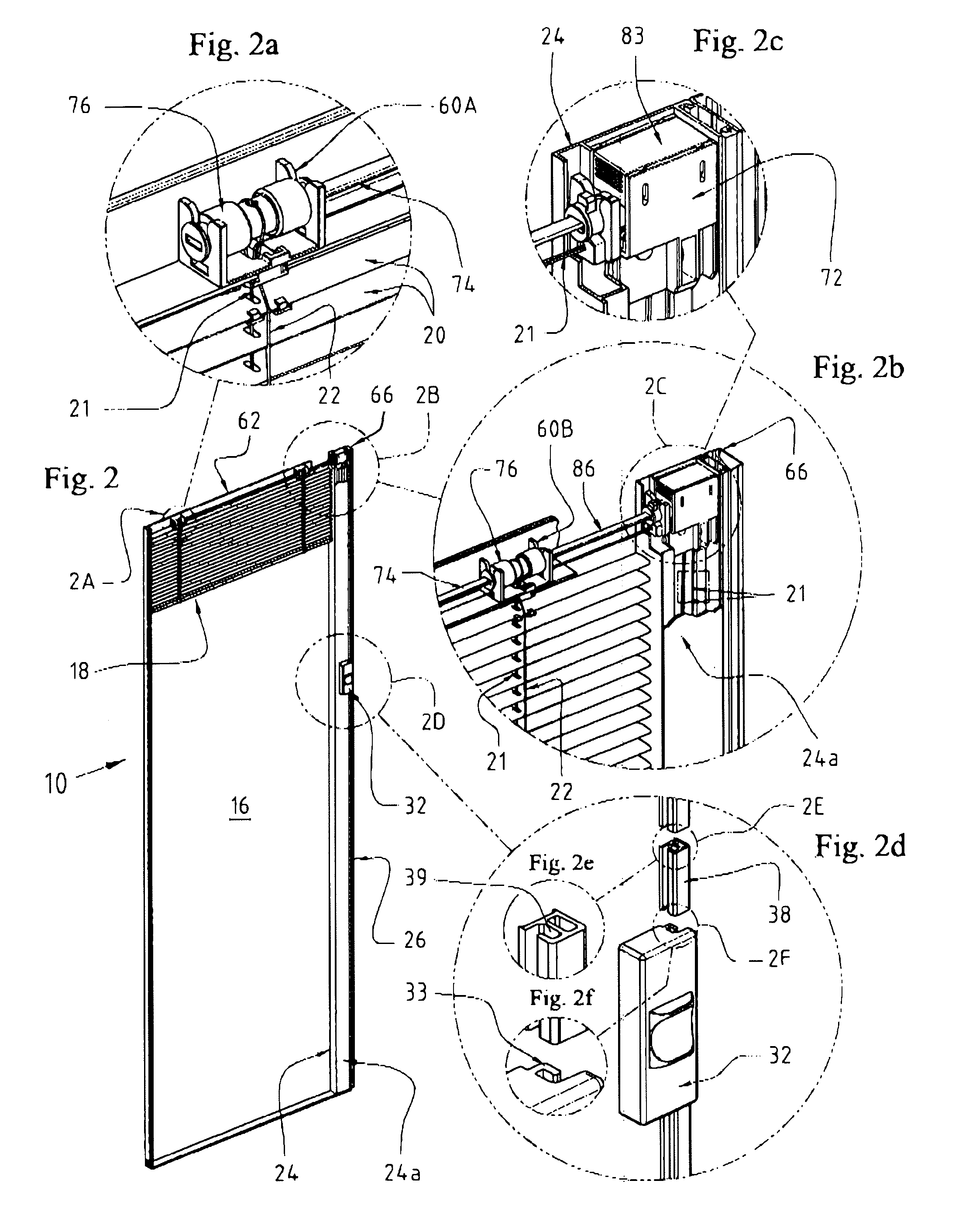Magnetic tilt and raise/lower mechanisms for a venetian blind
a technology of venetian blinds and levers, applied in the field of venetian blinds, can solve the problems of large force required to overcome the coefficient of static friction between external magnets, abrasive external magnets of many such designs, rendering the window aesthetically unappealing, etc., and achieve the effect of facilitating the raising, lowering and tilt adjustmen
- Summary
- Abstract
- Description
- Claims
- Application Information
AI Technical Summary
Problems solved by technology
Method used
Image
Examples
Embodiment Construction
[0073]A window blind assembly 10 according to the present invention is best shown in FIGS. 1 and 2. Assembly 10 includes a multi-pane window having first and second spaced panes 12, 14 defining an interior space, and an exterior surface 16. A window blind 18 including a plurality of slats 20 is disposed within the interior space between panes 12, 14. Raise / lower lines 21 and tilt lines 22 are coupled to slats 20, as best shown in FIGS. 2a and 2b.
[0074]As best shown in FIGS. 2, 3, 3a and 3b, a dual component carriage housing 24 with cover strip 24a, is disposed between panes 12, 14 within the interior space and proximate a side edge 26 of assembly 10. As best shown in FIGS. 4 and 5, a tilt strip 28 is disposed within carriage housing 24 and coupled to tilt lines 22, which is explained more fully below. Tilt strip 28 imparts linear tensile forces to tilt lines 22. As best shown in FIGS. 1, 2, and 6, an inner carriage 30 is disposed within carriage housing 24, and an external carriage...
PUM
 Login to View More
Login to View More Abstract
Description
Claims
Application Information
 Login to View More
Login to View More - R&D
- Intellectual Property
- Life Sciences
- Materials
- Tech Scout
- Unparalleled Data Quality
- Higher Quality Content
- 60% Fewer Hallucinations
Browse by: Latest US Patents, China's latest patents, Technical Efficacy Thesaurus, Application Domain, Technology Topic, Popular Technical Reports.
© 2025 PatSnap. All rights reserved.Legal|Privacy policy|Modern Slavery Act Transparency Statement|Sitemap|About US| Contact US: help@patsnap.com



